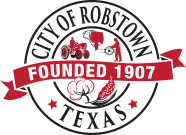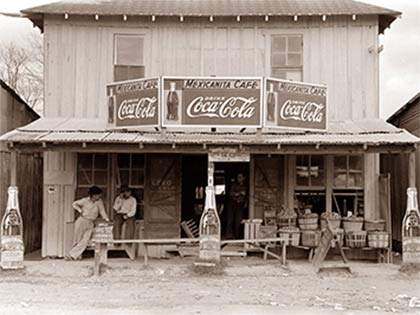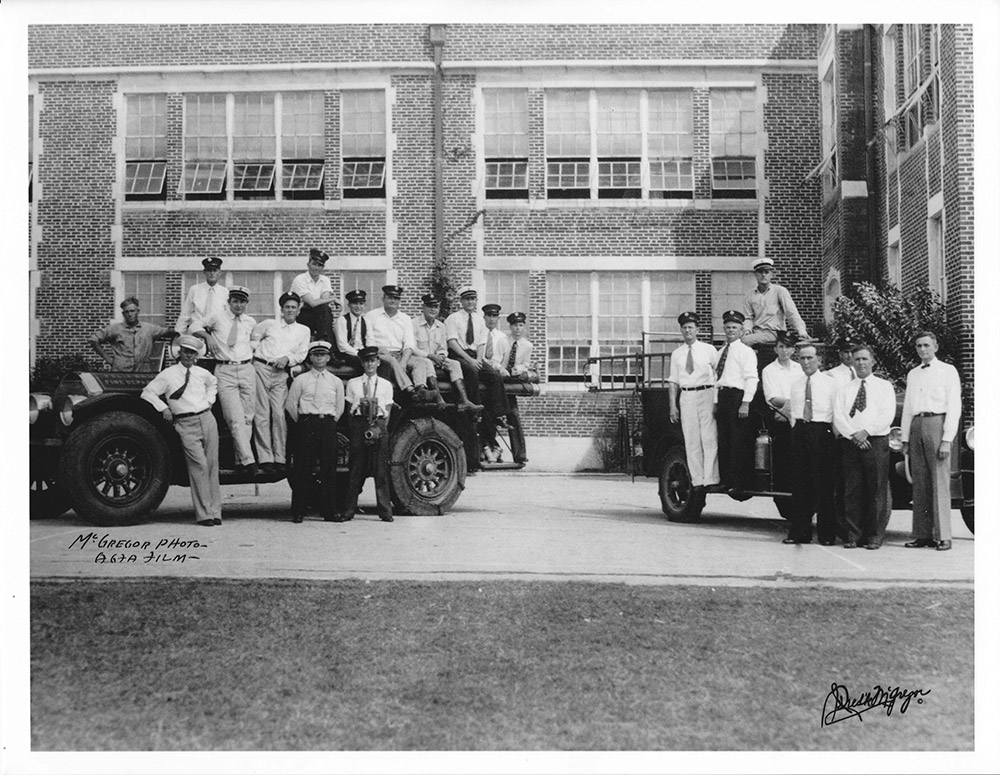Brief History of Robstown, Texas[1]
The Gulf Coast Region where Robstown is located was inhabited by Native Americans in the early 1300-1400’s A.D and subsequent years. Among the tribes who are believed to have lived along the region were the Coahuiltecan, the Tonkawa, Commanche, the Karankawa, and the Lipan-Apache.[2]
The first “Robstown” was located about 3-4 miles west of its present location in a site currently known as Rabb, Texas.[3]
On January 12, 1903 a charter was granted for the St. Louis, Brownsville and Mexico Railroad Company (Missouri-Pacific Rail Road) and the rail line would cross the Texas-Mexican Railway which went from Corpus Christi to Laredo.[4] This crossroad (as yet, unnamed) was a growth catalyst and agriculturally based economic engine that laid a foundation for the City of Robstown that was to become “The Biggest Little Town in Texas” in the following years. To this date (2016), this crossroads location continues to provide dynamic economic opportunities for growth for the City of Robstown and the entire Gulf Coast and South Texas regions.
Once this crossroad was established it stirred a series of entrepreneurial opportunities and ideas for local and non-local business-minded and land speculator pioneers. Much credit is given to the rail road crossroads for the birth of Robstown, but it was not until a land speculator from Keota, Iowa by the name of George H. Paul arrived in 1907 (thus the “beginning” of Robstown) and purchased 10,410.43 acres of the Driscoll Ranch located north of the Texas-Mexican Railroad (built in 1875[5]) that a vibrant new settlement began to take place.[6] He established the George H. Paul Land Company and built a land office for promoting and selling tracts of land. By then, other small entrepreneurs had begun to build hotels and other small businesses to accommodate the needs of a new influx of settlers helping to construct and expand the Missouri-Pacific rail lines and a growing population of settlers that began to develop and cultivate the rich farming land in the area. Among these early businesses was the Germania Hotel (originally located on the current Brendle hotel site) built by the A.B. Kuehm family in 1902 who came here to help with the construction of the Missouri-Pacific Rail Road south to Brownsville.[7] This was the first building built in Robstown. These early farmers and business entrepreneurs, within a few years, successfully turned the area into a leading cattle, cotton and vegetable farming/ranching area. Also among these small business ventures was a small store established by Robert Driscoll, Jr. and it was known as “Rob’s Store.” Soon after that, the locals were referring to it as “Rob’s town.” Thus the birth of the town’s name–Robstown.[8]
The Hispanic population of Robstown today is very prominent and they were certainly in the area in the early 1900s but not much of their presence is recorded. The first known historical account of a Hispanic (Mexican) family in Robstown was the arrival in 1907 of Anastacio Zamora. He was known as a labor organizer for clearing the land and construction of the rail road lines.[9] The first Black family in Robstown was that of Riley and Ella Mays who came in December 12, 1912 to a farm in the Petronila community and then settled in Robstown in 1917. Riley Mays founded the Mt. Zion Baptist Church in Robstown in 1918.[10]
The clearing of the lands of the stubborn mesquite trees for agricultural use was greatly enhance by the invention of the “Mrazek Plow” in 1908 by Tom Mrazek. Mrazek and Sons established a blacksmith shop that went on to build about 300 of these plows. This invention contributed significantly to Robstown’s trademark of becoming a large producer of cotton in the country as well as other vegetables.[11]
The City of Robstown was incorporated in 1912 and elected its first mayor, John L. Jacoby in April 1912.[12] The City’s Charter was adopted at an election held on March 9, 1948.[13] Robstown’s population in 1910 was 250 and 17,747 in 1957.[14] Its population in 2015 was estimated at 11,657 (84.4 % White in 2010). Of these, 93.6% were Hispanic or Latino.[15]
Today, Robstown is literally at the “crossroads of opportunity” since it is at the center of a strategically located transportation infrastructure that includes access to rail, highway and a water shipping port to move products internationally. The North-South Union Pacific Rail Road (previously the Missouri-Pacific RR) crosses the Kansas City Southern (previously the Texas-Mexican Rail Road). This makes possible the transportation of products to and from Canada to Mexico and other parts of the world via the Port of Corpus Christi.
The more rapidly developing North-South I-69 facilitates the ground transportation of products from the tip of South Texas to the northeastern Michigan border with Canada. It crosses the East-West State Hwy 44 in Robstown that connects Laredo, Texas to Corpus Christi and other key highway, rail and port facilities.
[Archival data are available at the Robstown Area Historical Museum, 201 East Main Street, Robstown, Texas 78380. http://www.robstownahm.org; Phone: 361-752-3052.]
[1] This brief history was written by Rumaldo Z. Juarez, Ph.D., volunteer staff at the Robstown Area Historical Museum, June 2, 2016.
[2] Nueces County Historical Society, The History of Nueces County (Austin: Jenkins, 1972), p. 15.
[3] The Robstown High School Junior Class of 1927-28, Robstown, Texas. The History of Robstown, Texas, 1928-1929. This historical accounting was an English class assignment of Miss Lillian Brigham from RHS. The Junior class of 1927-28 undertook the project and when they were Seniors in 1928-29 they “published” their work in this document.
[4] Peterson, Robert L. (Nueces County Librarian), Robstown Record, October 31, 1957.
[5] W.D. Doughty, History of Robstown, (circa 1957). W.D.Doughty was one of the early settler who came to Robstown in 1908 as depot agent for the Mo-Pac and Tex-Mex rail lines. This historical source is in the Robstown Area Historical Museum archives.
[6] Handbook of Texas (Texas State Historical Association, 1952, II, p. 789.
[7] The Robstown Record, October 31, 1957; Sect. 1, pg. 4.
[8] W.D.Doughty, 1957, p. 1.
[9] The Robstown Record, October 31, 1957; Sect. 8, pg. 1.
[10] Ibid, Sect. 2, p. 2.
[11] Ibid, Sect. 6, p. 5.
[12] Ibid, Sect. 1, p.8.
[13] Charter, City of Robstown, 1948. Copy located in the Robstown Area Historical Museum Archives.
[14] The Robstown Record, October 31, 1957; Sect. 1, pg. 1.
[15] Quick Facts, U.S. Bureau of the Census, U.S. Department of Commerce. Census.gov, 2016.










